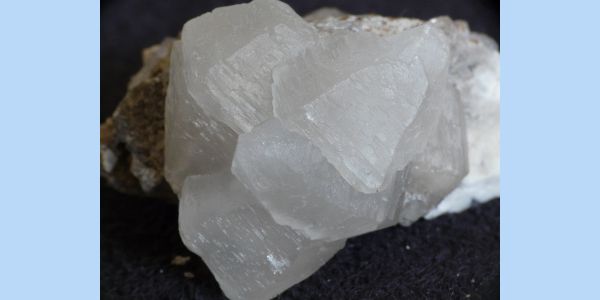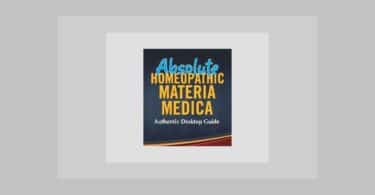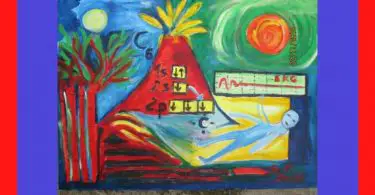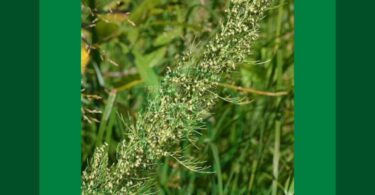Barium is a mineral belonging to the group IIA of the Periodic Table. The main feeling of remedies from this group is one of dependence, and Baryta carbonica is the most dependent of them all. Baryta carbonica is totally dependent on others, almost like a cripple or an imbecile. “Delusion that he walks on his knees” and “Delusion that a beloved friend is sick and dying” show the crippled, dependent feeling of Baryta carbonica and his fear of losing this support.
There is a feeling of total incapacity to take on responsibilities or do one’s own work. Baryta carbonica has anticipatory anxiety because of this feeling of incapacity. The patients are totally irresolute and depend completely on someone else to take decisions for them. This can work both ways. I have seen also that Baryta carbonica people can be very independent, even supportive of other people. They can be very responsible especially about family affairs: “Anxious about domestic affairs”, “Cares about domestic affairs”, “Anxiety about friends at home”, “Anxiety for others”. They can be extremely hard-working (industrious), very organized, conscientious, and they take pains to make sure of everything (carefulness). They consequently occupy quite responsible, dependable positions in their work and society. They are very methodical and reliable but lack imagination, art and creativity. Occasionally however, even such coped up Baryta can have bouts of irresolution and self-doubt. There is “Fear of strangers” which extends to the fear of facing any new situation and anything that is out of the routine, especially the kind of situation that forces them to make choices or take decisions. They can be resistant to any changes in their lives, for example they would try and avoid any changes in job or residence. They don’t like being noticed or brought into prominence, and would hesitate to wear anything that stands out, for example a shiny shoe. They are the last people to accept new fashions and are quite conservative in their way of dressing, living, etc. They avoid giving their views or opinions easily for fear of being criticized.
I have seen that Baryta carbonica patients like to confirm every single detail during a consultation, e.g. where and how to take the medicine, what are the food or other restrictions, etc., to the last detail, often provoking irritation and laughter from others. They are so dependent, it is childish. Phatak writes: “Children are late coming into usefulness, to take on their responsibilities and do their work”. The Baryta carbonica patient is very much afraid that he will lose (or something will happen to) those on whom he is dependent – seen in the delusion that “A beloved friend is sick and dying”.
I have mentioned in “The Spirit of Homoeopathy” a case of a 35 year old married woman who developed arthritic problems after the death of her neighbour, on whom she was dependent, and who was the only one in the neighbourhood who shared her mother-tongue. Due to this she lost the “crutch” which the neighbour provided, and since she could not actualize her delusion, that “Her legs are cut off” she developed a crippling arthritis which made her lean on others for support.
This great dependency on others, especially socially and financially, brings it close to Calcarea silicata. Calcarea silicata feels financially and socially dependent. The Baryta carbonica person feels both mentally (especially intellectually) and physically dependent like a disabled person.
Often the Baryta carbonica patients will give a history of being extremely shy in childhood and being unable to mix with others or make friends easily. They feel laughed at and criticized. There are many fears which are often childish (“Fear in children”). A small thing can make them extremely anxious: “Anxiety, trifles about”, “Delusion, she thinks every noise is a cry of fire and she trembles”, “Starts easily from noise and from fright”. In many Baryta carbonica persons I have seen a kind of simplicity, naivety. They are rather credulous.
Rubrics:
o Cares, domestic affairs, about.
o Childish.
o Strangers, presence of, aggravates.
o Delusion, as if beloved friend is sick and dying.
o Delusion, walks on his knees.
o Delusion, legs are cut off.
o Delusion, laughed at, mocked, being.
o Anxiety, others, about.
o Anxiety, trifles, about.
o Goes off alone and weeps as if she has no friends.
Physical symptoms:
o Chilly patient.
o Premature old age: hairfall, baldness, loss of memory, hypertension,
atherosclerosis at a young age.
o Desires: sweets.
o History of recurrent attacks of tonsillitis.
o May be emaciated.
Phatak:
o Hearing hard in old people.
If you would like to learn more about Dr. Sankaran’s work, courses and lectures please visit: http://www.onlinehmp.com
To read about the philosophical approach to developing these remedy pictures, see Dr. Sankaran’s introduction to Soul of Remedies: https://hpathy.com/homeopathy-papers/soul-of-remedies/






I. Am anonhodgkins lymphoma patient and I had first in 2012 and then chemo 8 finish after I got relapse in 2015 and 2016 chemo finish. Now I am Fine.
I have recently started homeopathic and should I avoid food diet please let me know